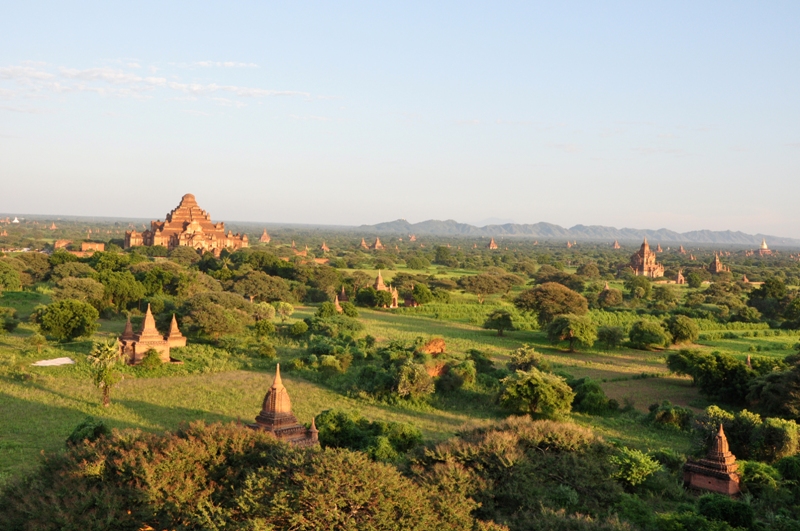Once called Siam, but today Myanmar, is a very colourful and still mysterious land of golden pagodas, Buddhist tradition and smiling people. Once isolated land is slowly opening to the world, but remains an enigma to many.
Visiting the capital - Yangon
If you’re planning to visit this country, I suggest you go as soon as possible. Every year there are more and more tourists, meaning the authenticity of the country is getting lost. The country is known for smiling people, as no matter how difficult their life is, they keep smiling whenever possible. First contact with the people is already in the international airport of the capital Yangon, where taxi drivers swarm you upon exit. As I knew how much a fare would cast, I was haggling for the price which was realistic. Landing in Yangon you should take a taxi is the nearest bus is 15 minutes walking away. Following a friend’s advice and also Lonely Planet, I took a three hour train trip around the capital. I asked an elderly man on the street, where the rail station was and he walked with me for 20 minutes to show it to me. About an hour later, when the train arrived, the man returned to the station to check, if I was on the right train. He was really happy, although the communication was only with hands and smile. Smiling is the best way to communicate in Myanmar. The ride showed me the life of local people. I got in touch with them. Also there is food sold on trains, as well as drink and other things. On stations, however, you can also buy live chicken or other feathered animals. A view out the window is full of interesting sites.
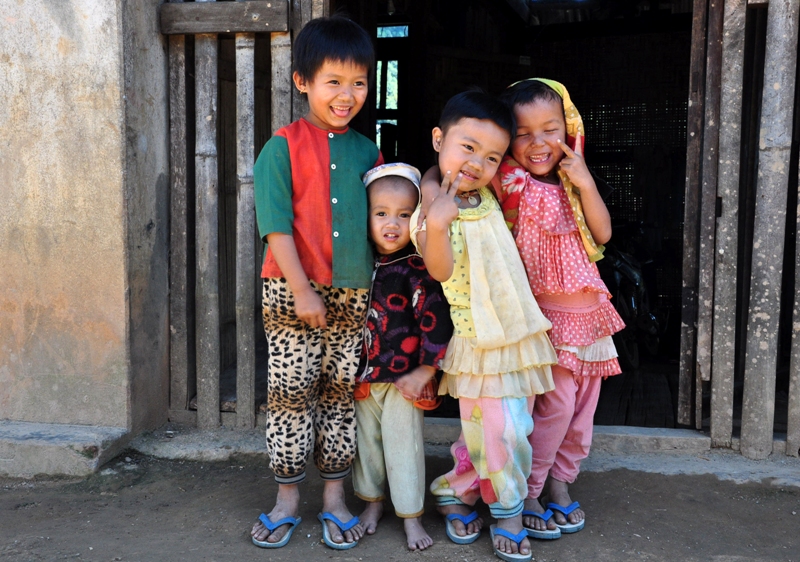
The Shwedagon pagoda
The biggest attraction of the capital is the Shwedagon pagoda, known as the grand pagoda Dagon, or also as the golden pagoda. It’s the holiest of Buddhist pagodas in Myanmar and many believe it holds relics of four previous Buddhas of the current kalp. A kalp is the time period of the world, used as the basic year count. Each kalp has four periods: the beginning of the world, the being of the world, the downfall of the world and chaos. All four periods make up one mahakalpa – the grand kalpa. The Shwedagon pagoda was made between 6th and 10th century. The legend says it’s over 2600 years old and should be the oldest Buddhist stupa in the world. According to the tradition Taphusa and Bhalika – two brothers, merchants – from the city of Balkh (in modern day Afghanistan) met lord Gautama Buddha, when he was still alive and got as a gift 8 locks of his hair. The reached Burma by the help of the local ruler – king Okalapa – who helped them find the Singutara hill, where the relics of the previous Gautama Buddha were stored. When the king opened the golden casket with the hair of Buddha mystic things started happening. From 16th century forth the pagoda became the most famous Buddhist place of pilgrimage in Siam and it remained such to this day. In 2013 US president Barack Obama visited the Shwdagon pagoda along with Hillary Clinton and met there the Nobel peace prize winner Aung San Su Chi. During my visit there were several political manifestation taking place, as there were presidential elections on November 8th. These were the first free election after 25 years of country’s isolation. It was Aung San Su Chi that was the strongest opposition candidate against the leading democratic party NLD. After the vote count Aung San Su Chi gained 70% of all votes and got the majority in the parliament. She was in house arrest for 15 years and was released to freedom on November 13th 2010.
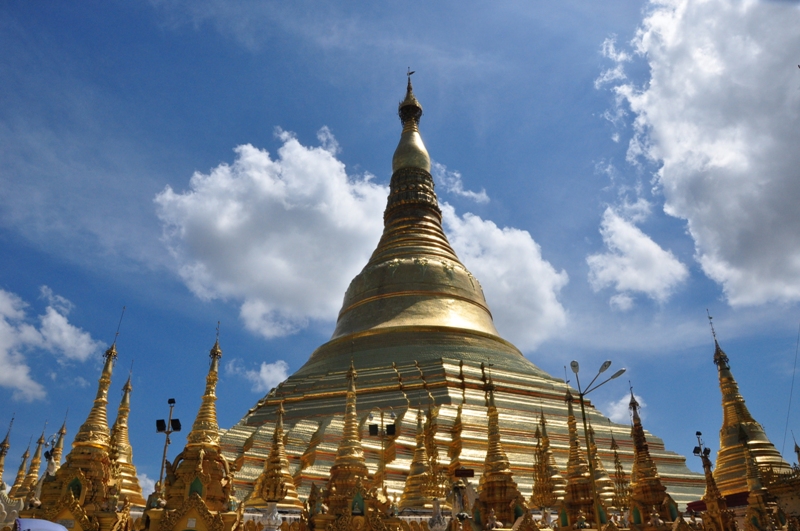
Lake Inle
Simon and I took the night bus from the capital and headed on a 13 hour long drive towards the city of Nyaung Shwe, which is the starting point to see the famous lake Inle. The 22 kilometre long lake is famous for the special way of fishing, where the fishermen stand on one leg and maneuverer the boat with the other. When they see tourists they start posing and a fisherman later demanded 1 dollar for the photos. As I’m not in a habit of giving people money, I gave him a shirt I was planning to give to somebody on the street. The lake is fairy tale like. People live in floating villages, with floating vegetable gardens, going fishing in their wooden crafts. You can rent a bicycle in every hotel and that’s probably the best way to explore the lake shore. The price for rental is around 1.400 kyat per day – which is an equivalent of about one Euro. There are around 70.000 people called Inta, that live around and on the lake, where there are four cities, many villages and floating settlements. The whole area is in the Nyaung Shwe county, where Inta form the majority, with some other people as well: Shan, Taundjo, Pa-O (Taungtu), Danu, Kajah, Danav and Bamar. Most of them are pious Buddhists living in humble wooden cottages on pikes, or in bamboo shacks. Mostly they are self-sufficient farmers. The lake district is also known for the weaving industry. The Shan bags, used mostly for shopping around the country are mostly made here. Weaving silk is an important part of economy and they’re making high quality silk products with recognisable design, known as Inle longyi.
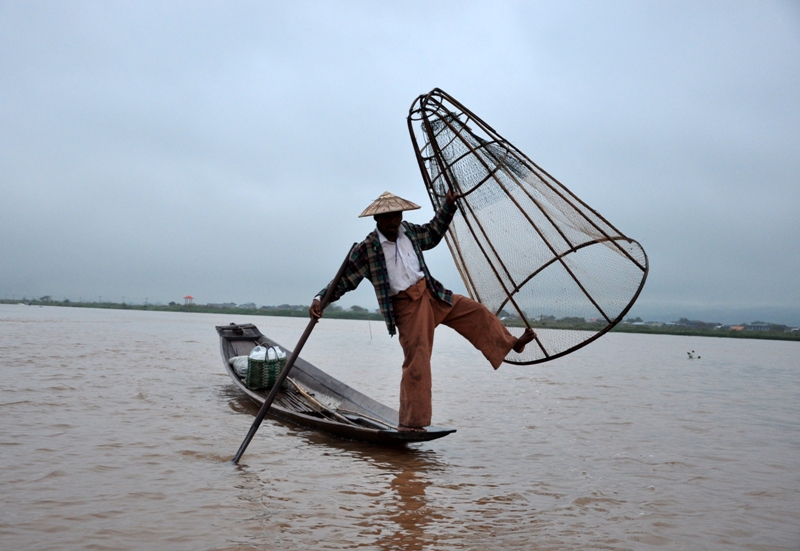
The best time to visit the lake is between October and March. It’s one of the biggest attractions of the land and in the city Nyaung Shwe you can meet travellers from all over the globe, who came to see the lake and its surroundings and also to enjoy the trekking.
Hsipaw
My basecamp for trekking was the city of Hsipaw, near the border with China. It was a two day trekking tour along the traditional villages at the elevation of almost 2000 metres. Travelers and other tourists can chose among many agencies offering treks of various length. People in the villages are really hospitable and willing to meet new faces from all over the globe. In the village of Pankam, where I slept for the night, I met a man wearing a T-shirt of the Slovenian basketball team. A visitor from Slovenia left it as a souvenir, so I knew a fellow countryman has been here, although the man wearing it couldn’t remember who nor which country this really was. When I mentioned Slovenia, nobody even heard about it, even less knew where it might be. People here are far from civilization. They make a living by growing tea that they put on motorbikes and take to the city market. Some also raise peanuts.
Bagan- between thousands of pagodas
The unforgettable visit to Bagan – I has a desire to reach it by boat on the Iravadi river, from the second largest city of Mandalaya. On the day I wanted to go there no boat was running, so I had to take the local bus. Among travellers there were chickens, geese and other living things. Bagan is an ancient city on the river Iravadi, which was the capital of the Pagan empire between 0th and 13th century. It was the first kingdom that unified religion. Upon the rise of the kingdom between 11th and 13th century the straights of Bagan became the building ground of over 10.000 Buddhist temples, pagodas and monasteries, with over 2200 of them surviving to this day.
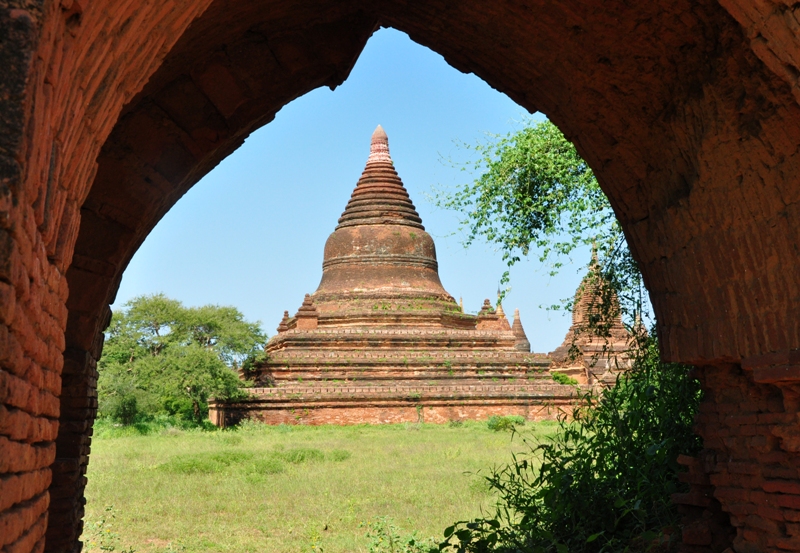
The archaeological site of Bagan is the main tourist attraction of the land. It’s the main destination of foreign tourists and a place of many sanctions in the raising tourist industry in the country. More than 300.000 foreign tourists annually visit Bagan. It’s interesting though, it’s not featured on the UNESCO heritage list, as the place is too renovated. Many temples are painted with new frescos, covering original ones, or with new Buddha statues. There are also many new hotels, asphalt roads and even golf fields. It’s best to explore the temples by a motorbike, which is usually electric. The owner promised the battery will last the whole day, but after a few hours the bike stopped as the battery went dead. Next day we took a bike from a guy who had newer models.
During the sightseeing of one of the many pagodas I’ve met on a first group of Slovenian travellers while on this journey. A group of elderly people from Ljubljana, who travelled with a guide from the agency. The best moments for exploring the temples is during the sunrise or sunset. The temples gain special colours during those parts of the day. You can also explore the Bagan by balloon, but it’s rather expensive. An hour and a half of flight will cost you 400 US dollars – way too much for a backpacker. And there’s a saying in Myanmar: “If you’ve really been to Myanmar, you must be in in Bagan.” Bagan is the spirit of national history. The country itself will not leave you cold. You’ll love to return to the place where people communicate by smiling.
